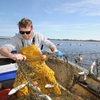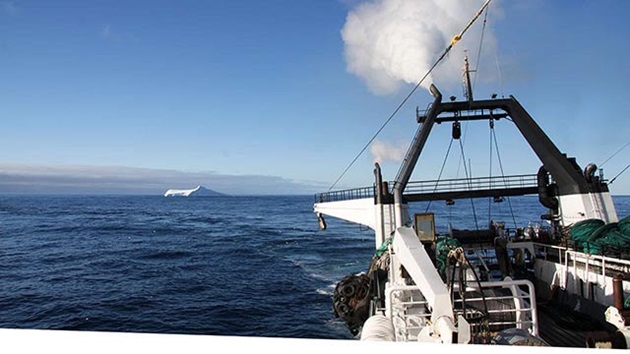Antarctic krill might be tiny, but they are one of the most important species on the planet. They are the main food source for penguins, seals, whales and seabirds, responsible for carbon sequestration and support an entire ocean ecosystem. Because of this, any level of krill fishing needs to be managed sustainably.
Who manages Antarctic krill?
Fishing for krill in Antarctica is not a free-for-all. It’s tightly controlled by an international body called the Commission for the Conservation of Antarctic Marine Living Resources (CCAMLR). This organisation includes governments, scientists and conservation experts who agree how much krill can be caught, where fishing is allowed and how it must be monitored.
What is the MSC and what does it do?
The Marine Stewardship Council (MSC) is an independent, non-profit that sets a global, science-based standard for sustainable fishing. The MSC does not certify fisheries itself – instead, independent accredited auditors assess whether a fishery meets the standard.
For a product to carry the MSC blue fish tick label, every company in the supply chain from the vessel to the final processor must meet the MSC Chain of Custody Standard. This prevents seafood from unverified sources being mixed in. Consumers then have confidence that the seafood comes from a fishery that has been independently assessed as sustainable.
What is “localised depletion” and why is it a concern?
“Localised depletion” means too many krill being taken from one small area, faster than they can naturally recover. This could make it harder for nearby predators like penguins or seals to find enough food.
Scientists, conservation groups and industry all agree this is an important issue. The good news is that rules are already in place to reduce this risk, and more improvements are being worked on.

How krill fishing is controlled
Here is how krill fisheries are currently managed to protect wildlife and the ecosystem:
- Catch limits are very low, only around 1% of the estimated local krill population can be taken each year.
- Fishing is only allowed in specific zones (such as Sub-areas 48.1–48.4 and 48.6 in the Southern Ocean).
- Once the catch limit in a zone is reached, the area is closed for the rest of the season. This happened in August 2025 when a limit was reached for the first time.
- Fishing vessels must report their location and how much they catch in real time.
- Scientific observers are placed on vessels and vessel-tracking systems are mandatory, so fishing activity can be monitored and verified.
- To protect penguins, MSC certified krill fisheries have voluntarily closed fishing areas near penguin feeding grounds, ensuring penguins have access to the krill they depend on.
The MSC’s role in protecting Antarctic wildlife
A krill fishery cannot be certified to the MSC’s environmental standard for fishing unless it can show it does not compromise the overall ecosystem or the species that depend on krill. Find out more about MSC certified krill fisheries at the MSC's Track a Fishery page >
The MSC recognises that krill fishery management must continue to evolve as science improves. This includes better understanding where predators feed, how krill are distributed and how fishing effort is spread. The MSC supports continued research, data sharing and improvements in spatial management to help ensure krill remain available where wildlife needs them most.

In summary, krill is vital to Antarctic wildlife and must be managed carefully to protect the ecosystem. Localised depletion is a real concern and is recognised by scientists, CCAMLR and the fishing industry. Strict rules are already in place, including catch limits, area closures and full monitoring. As science advances, management must also evolve, and the MSC supports ongoing research and improvements to protect Antarctica’s wildlife.



